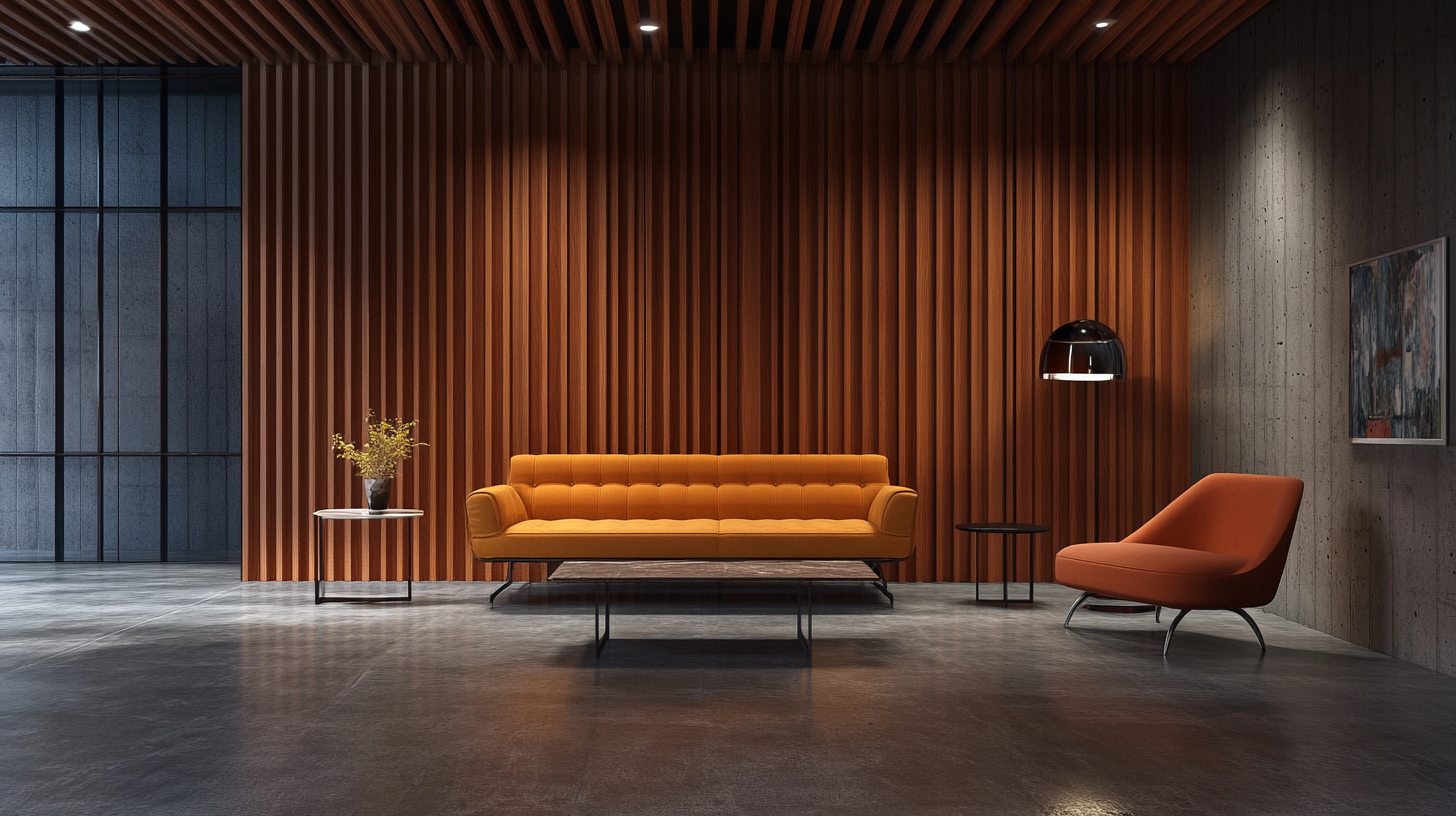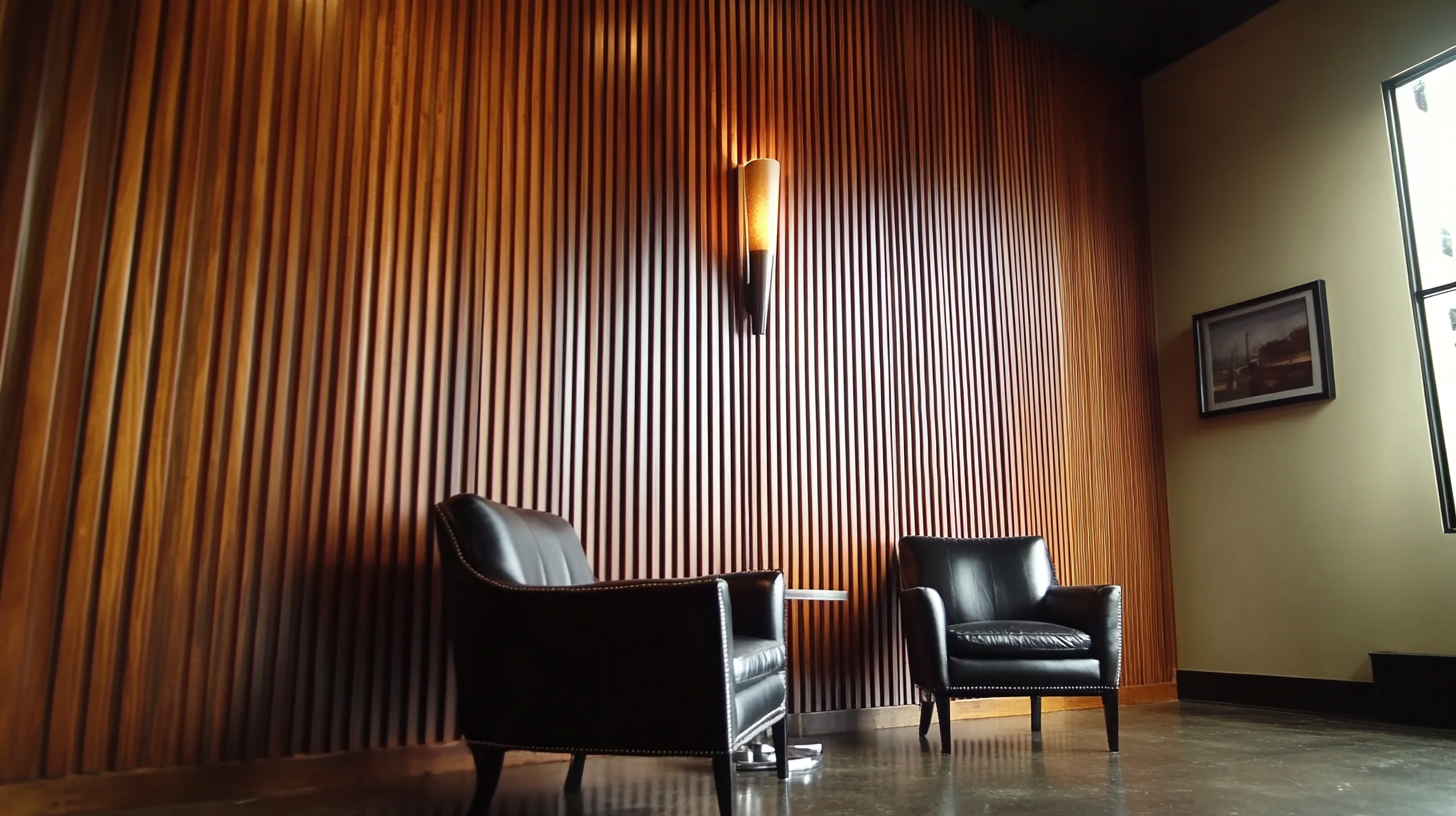Shandong Xiangying New Materials Technology Co., Ltd.
Shandong Xiangying New Materials Technology Co., Ltd.
In the ever-evolving construction industry, the demand for aesthetically pleasing and functional materials has led to the growing popularity of Fluted Wall Panels. According to a recent report by Grand View Research, the global wall panels market is projected to reach $41.47 billion by 2025, with an increasing share attributed to innovative designs like fluted panels. These panels not only enhance the visual appeal of spaces but also offer benefits such as improved acoustics and energy efficiency. However, navigating the market to find high-quality Fluted Wall Panels requires an understanding of production standards and supplier reliability. This ultimate guide aims to equip industry professionals and designers with essential insights into identifying premium suppliers and making informed decisions, ensuring that their projects meet both aesthetic and functional requirements.

Industry standards play a crucial role in the production and selection of fluted wall panels, ensuring quality, safety, and aesthetic consistency in architectural designs. According to the International Organization for Standardization (ISO), adherence to industry standards can reduce production errors by up to 30%, significantly improving the overall reliability of the products. These standards delineate specifications for material properties, manufacturing processes, and testing requirements, which are essential for maintaining durability and performance in diverse environmental conditions.
Furthermore, the American Society for Testing and Materials (ASTM) provides critical guidelines that manufacturers must follow when producing fluted wall panels. For example, the ASTM C645 standard outlines the minimum requirements for steel framing members used in these panels, influencing factors like structural integrity and resistance to deformation. By choosing products that are compliant with these established industry standards, architects and builders can enhance the longevity and safety of their projects, ensuring that their fluted wall panels will not only meet aesthetic goals but also withstand the test of time. Emphasizing these standards can also improve buyer confidence, with industry reports suggesting that compliance can lead to a 20% increase in market value for buildings utilizing standardized materials.

When selecting fluted wall panels, it’s essential to understand the key characteristics that define high-quality options in the market. High-quality fluted wall panels are typically made from durable materials such as PVC or MDF, which can withstand wear and environmental changes. The thickness of the panels usually ranges from 5mm to 18mm, with thicker panels offering better insulation and sturdiness. A recent industry report highlights that the aesthetic appeal, provided by unique patterns and textures, can significantly enhance interior spaces, making them a popular choice among designers.
In addition to material and thickness, the finish of fluted wall panels plays a critical role in their overall quality. Panels with smooth, consistent finishes not only offer a refined look but are also easier to clean and maintain. According to design trends for 2024, the integration of fluted elements into modern decor has seen a rise, as they pair beautifully with various styles, from minimalist to eclectic. Homeowners looking for practical yet stylish solutions should consider these characteristics while exploring the latest PVC wall panel design ideas that resonate with contemporary aesthetics.
When selecting wall panels for your project, several key factors come into play to ensure you choose the right product for your needs. First and foremost, consider the material of the wall panels. PVC, fiberboard, and metal are among the common options, each offering distinct advantages. A recent industry report indicated that over 60% of construction professionals prefer PVC for its durability and ease of maintenance.
Another crucial aspect is the panel’s finish and design. The aesthetic appeal of your panel can greatly influence the overall atmosphere of your space. Research shows that environments featuring attractive wall panels can enhance employee productivity by up to 15%. Therefore, aligning the design with your project's theme is essential.
**Tip:** Always check for certifications related to product safety and environmental impact. Ensuring your wall panels meet industry production standards can help prevent future issues.
**Tip:** Consider the installation method—whether the panels are adhesive or interlocking can significantly affect labor costs and convenience during setup.

In recent years, fluted wall panels have gained popularity as a stylish and innovative design choice for both residential and commercial spaces. These panels can transform a plain wall into a stunning focal point, adding texture and dimension to any environment. The key to selecting the right fluted wall panel lies in understanding the current design trends and how they can complement your space.
When exploring innovative trends, consider materials that not only enhance aesthetics but also provide durability. For instance, eco-friendly materials like bamboo or recycled composites are becoming increasingly popular, appealing to environmentally conscious consumers. Additionally, bold colors and unique surface finishes can make a statement, elevating the overall design of the room.
**Tips:**
1. Think about the room's lighting when choosing a panel finish; matte and glossy finishes can dramatically alter the perception of space.
2. Use fluted panels as a way to create zones within an open floor plan, drawing attention to specific areas while maintaining an integrated look.
3. Pair fluted wall panels with complementary furnishings to create a cohesive design theme that highlights both modern and traditional elements.
| Dimension | Material | Thickness (mm) | Surface Finish | Fire Rating | Installation Type |
|---|---|---|---|---|---|
| 1200mm x 2400mm | MDF | 18 | Matte | Class B | Glue-Up |
| 600mm x 1200mm | PVC | 12 | Glossy | Class A | Paneling |
| 900mm x 2400mm | Plywood | 15 | Textured | Class B | Nail-up |
| 1200mm x 3000mm | Aluminum | 2 | Anodized | Class A | Clip System |
| 2500mm x 2500mm | Steel | 1.5 | Powder-coated | Class A | Welded |
Sustainability is a pivotal aspect of wall panel production, as it not only reflects a commitment to environmental consciousness but also meets the increasing demands of eco-aware consumers. According to a report by the Forest Stewardship Council, the global demand for sustainable building materials has risen by 20% over the past five years. This shift is largely driven by regulations favoring green building practices and the growing preference for materials with lower carbon footprints. Fluted wall panels made from recycled materials or sustainably sourced wood can significantly reduce environmental impact, making them a smart choice for both commercial and residential spaces.
Incorporating eco-friendly practices into the production of wall panels involves several considerations, from the sourcing of raw materials to the manufacturing processes employed. Research from the U.S. Green Building Council indicates that utilizing renewable resources and minimizing waste during production can decrease greenhouse gas emissions by up to 30%. Furthermore, the lifecycle assessment of building materials emphasizes the importance of durability and recyclability, ensuring that products like fluted wall panels not only perform well but also remain sustainable throughout their lifespan. As consumers become more educated on these issues, choosing the right wall panel that aligns with ecological values will play a crucial role in future construction projects.
